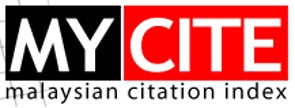Determining Land Suitability for New Primary Schools in Seremban, Malaysia: An Exploratory Study with the GIS-MCDA Approach
DOI:
https://doi.org/10.24191/bej.v22iSI.6480Keywords:
GIS-MCDA, Land Availability, School Development, Spatial Assessment, Sustainable DevelopmentAbstract
Schools serve as community cornerstones, offering education and a platform for adult learning, healthcare services, and civic engagement. Recognising this vital role, this study uses a GIS multi-criteria decision analysis (MCDA) approach to identify suitable land for a new primary school in Seremban, Negeri Sembilan. The MCDA approach assesses various critical criteria for optimal school placement, including population density, land use, school, clinic, land size, and topography or slope. The result shows that most of the land suitable for developing new schools is in the Seremban city centre due to development suitability, particularly the high population density and public facility availability. However, the study's findings also suggest that the location of the newly proposed primary schools should prioritise student accessibility and community integration in Nilai and Senawang. Ultimately, the identified land will contribute to a strong sense of community spirit and enhance the overall well-being of the area, providing valuable insights for urban planners, policymakers, and educators.
References
Abdullah, S., & Chan, K. (2024). Asia Pacific Planning Review, 12(1), 45-61.
Abdullah, S. N. B., Ahmad Zawawi, E. M., Abdul Rasam, A. R., & Muhamad Salleh, N. (2024). Spatial Environmental Impact Of The Lrt3 Development Project: A Perception Study In Seksyen 7 Shah Alam. Planning Malaysia, 22(31). https://doi.org/10.21837/pm.v22i31.1470
Ahmed, S., & Wang, T. Y. (2022). A GIS-MCDA approach for identifying optimal locations for educational facilities. Journal of Spatial Analysis and Planning, 10(4), 342-359.
Ahmad, N. A., & Rahman, M. R. (2021). Urban expansion and educational infrastructure in Negeri Sembilan. Journal of Urban Planning, 12(3), 205-219.
Garcia, L., & Martinez, P. (2020). Integrating multi-criteria decision analysis in GIS for educational infrastructure development. Journal of Urban Studies and Planning, 18(1), 97-115.
Hashim, N., Ismail, A., & Omar, H. (2023). Journal of Urban Planning, 58(3), 255-267
Jalil, I. A., Rasam, A. R., Adnan, N. A., Saraf, N. M., & Idris, A. N. (2018). Geospatial network analysis for Healthcare Facilities Accessibility in semi-urban areas. 2018 IEEE 14th International Colloquium on Signal Processing & Its Applications (CSPA). https://doi.org/10.1109/cspa.2018.8368722
Lim, W. Y., & Tan, H. S. (2023). Addressing educational needs in growing communities: A Nilai and Senawang case study. Malaysian Journal of Education, 40(2), 133-145.
Mohd Hasmizi, N. S., Abdul Rasam, A. R., & Mohamed Saraf, N. (2020). E-mosque tourism: Discovering mosques via geodigital mapping in Kuala Lumpur, Malaysia. Charting the Sustainable Future of ASEAN in Science and Technology, 507–517. https://doi.org/10.1007/978-981-15-3434-8_44
Mustapha, N. I., Rasam, A. R., Saraf, N. M., Idris, R., & Wakijan, A. (2023). Cycling route mapping via cartography and GIS techniques. IOP Conference Series: Earth and Environmental Science, 1240(1), 012008. https://doi.org/10.1088/1755-1315/1240/1/012008
Rahman, Z., Ismail, S., & Noor, M. (2022). Urban Policy Review, 34(2), 123-135.
Rahman, Z., & Ismail, N. (2022). Integrating GIS and MCDA for strategic school site selection. Journal of Spatial Analysis, 17(2), 134-148.
Smith, J. A., & Brown, L. R. (2021). The role of primary schools in community development: Beyond education. Journal of Community Studies, 15(4), 223-240.
Tan, S. L., Lim, W. Y., & Chia, K. H. (2023). A GIS-MCDA approach for educational infrastructure planning in Malaysia. Urban Planning Review, 29(1), 89-105.
Thompson, R. K., & Lee, M. Y. (2022). Integrating MCDA within GIS for optimal school site selection: Enhancing community connectivity and well-being. Journal of Urban and Regional Planning, 28(3), 189- 207.
Wilson, J. D., Chen, H., & Patel, R. (2021). Utilising MCDA and GIS for strategic school site selection: A case study in urban planning. International Journal of Geographical Information Science, 35(2), 256-274.
Downloads
Published
How to Cite
Issue
Section
License
Copyright (c) 2025 Amirul Asraf A Renzi , Abdul Rauf Abdul Rasam, Saiful Anuar Jaafar @ Ibrahim, Daniel Ugih anak Echoh

This work is licensed under a Creative Commons Attribution-NonCommercial-NoDerivatives 4.0 International License.
CC BY-NC-ND 4.0 DEED
Attribution-NonCommercial-NoDerivs 4.0 International














